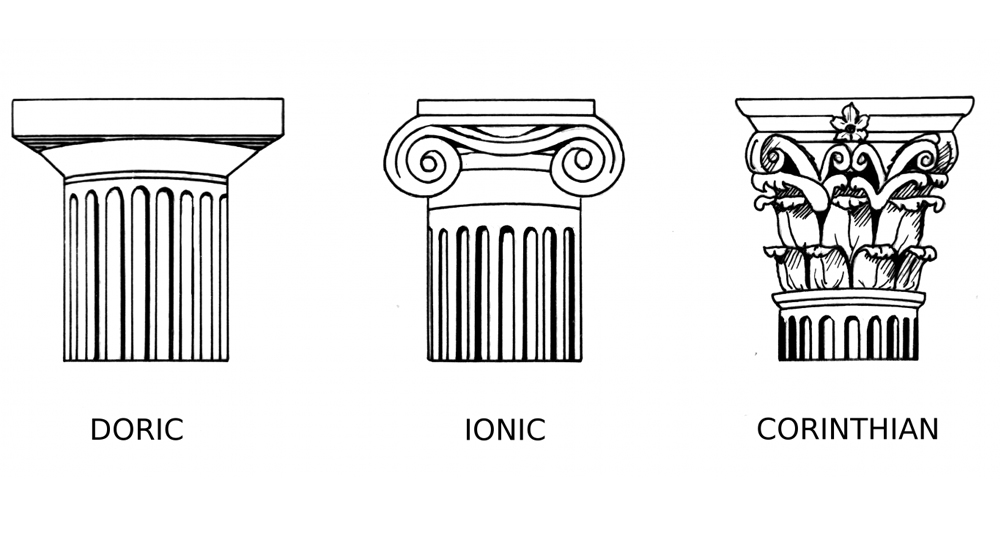 Home > All About Columns
Home > All About ColumnsAll About Columns
Intro
Columns are an extremely important part of architecture, as load bearers, looking presentable massively contributes to how grand the building can look. Columns being a typical trope of Greek and Roman architecture, have many variations and have changed a lot throughout history and became extremely influential in architecture around the world.
 Image Sourced from Architecture Competitions
Image Sourced from Architecture Competitions
Tuscan & Doric Columns
Tuscan and Doric columns are the simplest types and were both created in Ancient Rome and Ancient Greece respectively. Tuscan columns are just a simple, plain straight, cylindrical column with rounded off with bases at the top and base of the pillar + a plinth at the bottom and necking rings at the top. Doric, on the other hand, are similar but have one key difference, the employ the famous grooved (or fluted) line design from the top to bottom of the shaft which would be a mainstay of column design for each of the next design types I will talk about, whereas the Tuscan columns employ a more simple design, using a smooth shaft.
 Image Sourced from Stevensons of Norwich (by James Gibbs)
Image Sourced from Stevensons of Norwich (by James Gibbs)
Ionic (BASED)
Ionic, the generally most popular, created in Ancient Greece and used mainly in the Archaic Period (750–480 BC) but still often used after that, are similar to the Doric variant with ONE key difference - VOLUTES! Volutes, otherwise known as the scroll-like curly things at the top, rounding off the entire design, perfecting this variant. This variant is commonly thought as the perfect blend of simplicity and complexity. It is a load bearer, with subtle decoration which makes the entire building seem much grander and more complete, without taking the attention away from the actual building. Ionic columns vary by design, some have the volutes on the right, and left like in the image below but some have them poking out on all four sides, diagonally like in the Corinthian and Composite designs.
 Image sourced from Penn State University
Image sourced from Penn State University
Corinthian (MID TIER)
Corinthian columns, created in Ancient Greece and mainly used in the Late Classical Period in (430 - 323 BC), are detailed and intricate, using a much lower necking to allow for more space for design at the top. Mainly, Corinthian columns were created with a leaf, natural, and curling design. It looks great but many (including me) think of it as just too complex as that it takes away from the overall design.
 Image sourced from 1868 Ornamental Design Book
Image sourced from 1868 Ornamental Design Book
Composite columns, created in Ancient Rome are similar to Corinthian Columns with a the difference that means they are sort of a combination of the Corinthian and Ionic variants. I do actually like this one and I definitely like it more than the Composite and Tuscan variants.
Thanks for reading,
Ethan M
